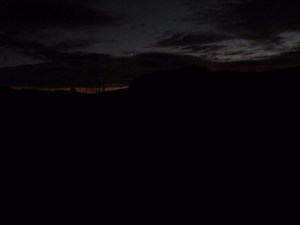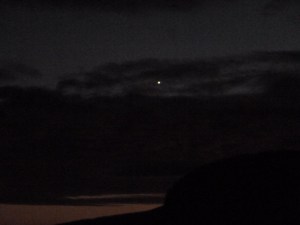Continuing the catch up with another astronomical themed blog – this one from 28 November 2013.
So far I’ve been writing about the morning skies in November, but they weren’t the only things that have been bright and amazing. The evening skies have also had there moments, less so on the grand scale of colour and dramatics but still something to behold.
Over the evenings towards the end of November, the sky has had its moments, while the sun had been setting the sky has been lit by a single bright star, visible long before any of the other stars are visible. Though really this sighting is not actually a star, but the planet Venus, which shone like a bright pin-prick of light, highlighting the darkening skies of night.
 Star of the Evening – 28 November 2013 (Copyright Carol Jones)
Star of the Evening – 28 November 2013 (Copyright Carol Jones)
On this evening, Venus shone out from a darkening sky that had been coloured with a rich warming glow of the setting sun. The last rays of the evening sun made the clouds present seem almost black and whereas the surrounding sky was alight with fiery oranges. As the sun sank lower, the remaining rays of light painted the base of the clouds with rich warm oranges, warmer and darker than those of the morning. Then out from this darkening sky, like a single headlight shining out of the darkness to light the way towards the night, shines the Star of the Evening.




